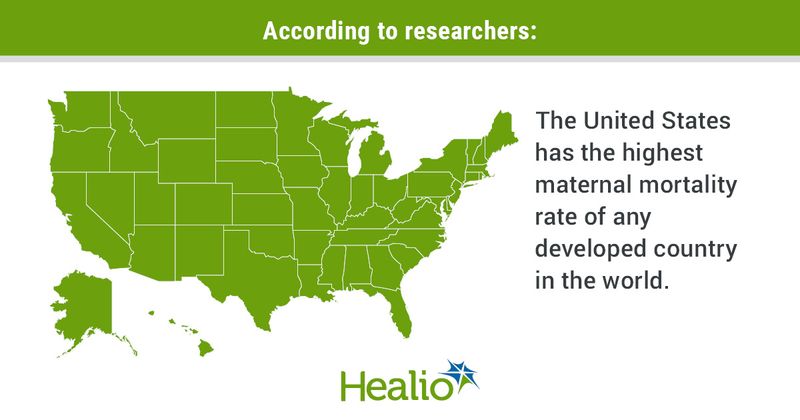Maternal mortality rate higher in US counties without PCPs
The United States maternal mortality rate was higher in counties without a primary care physician than counties with the highest number of PCPs, data from 2014 show.
“The maternal mortality rate in the United States is the highest of any developed country in the world,” Ghanshyam Yadav, MD, a resident physician in the obstetrics and gynecology department at Baylor College of Medicine, told Healio Primary Care.

An increase in chronic conditions among women could be driving the high maternal mortality rate in the U.S., according to Yadav and colleagues. PCPs, they noted, have an important role in managing these conditions.

For a virtual American College of Obstetrics and Gynecologists Annual Clinical and Scientific Meeting presentation, Yadav and colleagues used county-level data from the AMA and National Vital Statistics System to count the number of PCPs and maternal deaths in the U.S. The researchers also used population metrics from the Census Bureau to estimate the number of PCPs per 100,000 people. They then used a linear regression model to determine if there was a link between the rate of PCPs and age-standardized maternal mortality.
The researchers found that after adjusting for sociodemographic factors, the number of PCPs per 100,000 people at the county level was negatively associated with the maternal mortality rate (P < .001). Nationwide, with one more PCP per 100,000 people, the maternal mortality rate would drop by 0.08 per 100,000 people.
Yadav and colleagues further analyzed data on maternal mortalities in 149 U.S. counties with no PCPs vs. 149 counties with the most PCPs. The average maternal mortality rate was 0.36 per 100,000 people (95% CI, 0.34–0.38) in the counties with no PCPs vs. 0.28 per 100,000 people (95% CI, 0.26–0.3) in the counties with the most PCPs, resulting in a 22% relative risk reduction.
Decreasing maternal mortality rates requires short- and long-term solutions, Yadav said.
“Primary care physicians play a vital role in management of conditions like high blood pressure and diabetes,” he said. “If these are poorly controlled, the patient is at higher risk for mortality; thus, it becomes very important for primary care physicians to address these conditions during routine visits before a patient becomes pregnant.”
Yadav also encouraged initiatives that increase the number of PCPs nationwide, facilitate the implementation of telehealth in primary care and provide women who do not want to become pregnant with unrestricted access to contraception.

